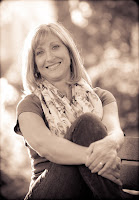I love it when the projects are targeted to specific age groups. The older elementary students either created their perfect pet using my I Like Dogs! series or composed interesting facts from my Creature Features series.
Don't they look great on display with my books in the library!
Younger elementary students chose one of my books, identified the main topic and two interesting facts they learned from the book. Listing where they found the facts is a great way to introduce young students to reliable sources.
 Linda Bozzo has published more than 50 nonfiction books for the school and library markets. For more information about Linda and her books, or to book an author visit, you can visit her website.
Linda Bozzo has published more than 50 nonfiction books for the school and library markets. For more information about Linda and her books, or to book an author visit, you can visit her website.
Copyright 2017 Linda Bozzo























